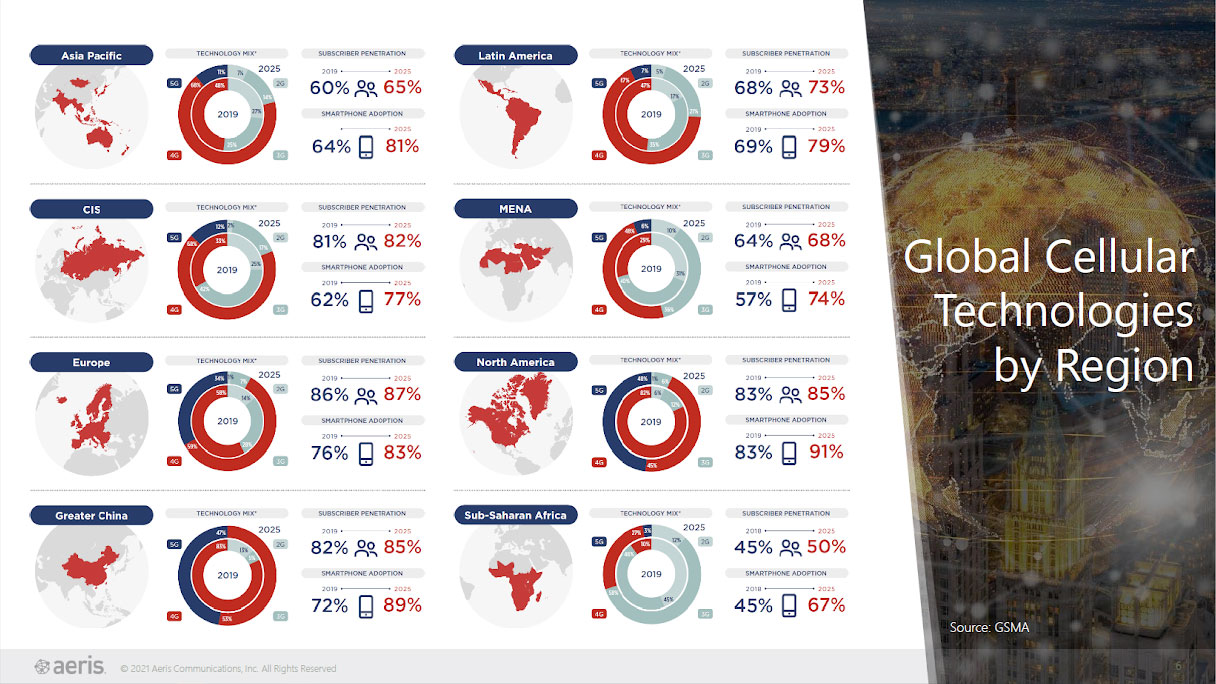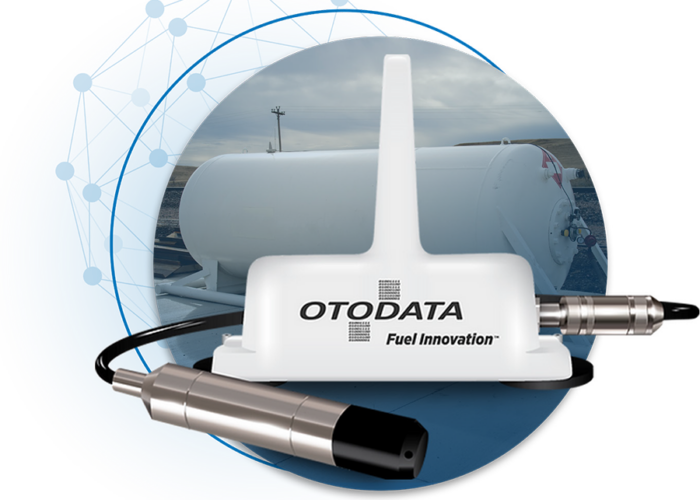In a recent session at the IoT M2M Council (IMC) Winter IoT Days, Aeris CTO, Syed ‘Z’ Hosain, reviewed the three primary factors complicating global IoT deployments, and offered tips for managing these complexities.
Network technologies differ by region
Network technologies are always evolving, and they don’t evolve at the same pace in each part of the world. For instance, 2G and 3G are already largely obsolete in North America, while they are predicted to remain dominant in Africa through the end of the decade. And while there’s a lot of buzz about 5G, it’s unlikely to be widely available outside of dense urban areas for quite some time.
Any large-scale global IoT deployment will have to account for network technology availability in each of the geographies served, and may need to utilize multiple technologies.
TIP: understand the network technologies available in each region you wish to deploy, both what is available today and what will be available over the expected life of your devices.
Each country has its own set of carriers
While North America is dominated by a handful of carriers, global IoT deployments encounter hundreds of carriers. These complex coverage maps make it challenging for IoT solution providers to determine the best carrier strategy to optimize solution performance, while also balancing the restrictions of carrier-imposed network steering and the cost of roaming charges. IoT solution providers would be well-served to partner with a connectivity provider that has relationships with multiple carriers in each region to ensure comprehensive coverage and that provides the flexibility necessary to optimize performance across those carriers.
TIP: over-the-air (OTA) updates are crucial to maintaining optimal performance or changing roaming preferences over the life of a device, as carrier coverage footprints or technologies change.
Regulations vary by country
IoT solution providers must account for a host of regulatory requirements spanning both telecoms regulations and data privacy requirements, which differ from country to country. A few examples include:
- Device certification requirements vary across countries
- Privacy laws such as GDPR in the EU apply to IoT data communications
- Some countries specify that IoT data must stay within national boundaries
- Some countries do not allow permanent roaming of devices in their country
TIP: you don’t have to be the expert in every regulation you’re subject to, but you absolutely must partner with a connectivity provider who is an expert and can help you navigate them.
Other things to consider with large-scale deployments
By nature, global IoT deployments tend to be large-scale deployments. Outside the complexities of deploying devices into multiple regions, there are additional challenges with simply managing hundreds of thousands of devices–wherever they are! When deploying at scale, efficiency and reliability become must-haves. Here are some additional tips for designing your IoT solution that will set you up for success at scale:
- Plan for manufacturing efficiency. Using on-board modems instead of plug-in modems can save time and money during production.
- Consider eSIM and iSIM as they become available. These options provide a safeguard against evolving network technologies and carrier coverage footprints over time.
- Think about the whole solution. After-market applications must have a seamless installation process so as not to become an excessive burden on technical support.
Aeris is the premier IoT connectivity provider for businesses deploying global solutions. Our network comprises over 600 carriers across 190 countries and supports over 15 million devices. Only Aeris has the comprehensive global reach, flexible network infrastructure, and deep IoT expertise to seamlessly deploy and manage global IoT solutions. Learn more tips and tricks for scaling your deployment in our How to Scale Your IoT Solution whitepaper.



